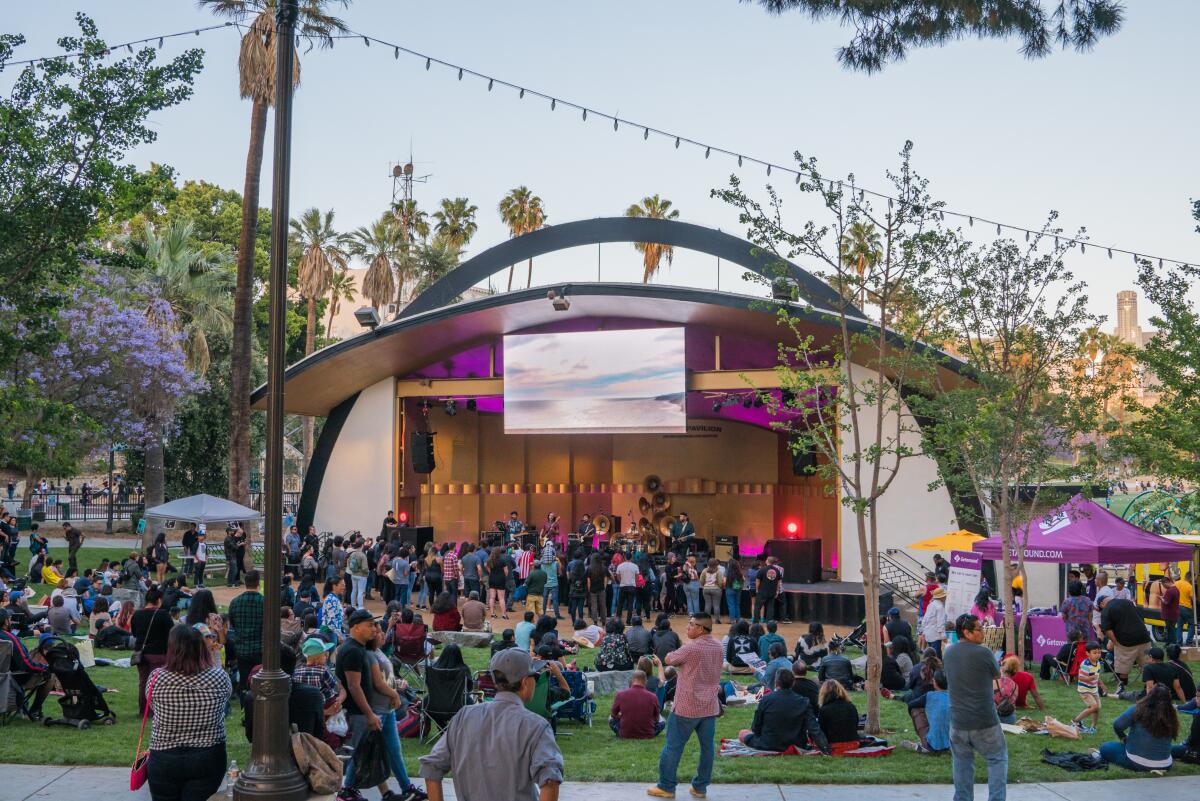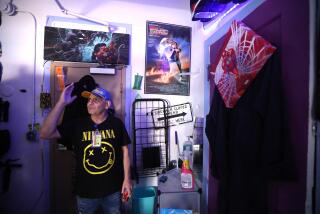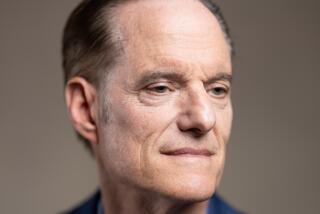Levitt Foundation to spend down $150 million as it prepares to close (in 18 years)

Shortly before the COVID-19 pandemic, the Levitt Foundation experienced an identity crisis.
Since 1966, the foundation has turned dilapidated, unused public spaces into outdoor amphitheaters to host free concerts across the country. In 2019, the Levitt Foundation had budgeted funds to develop 15 new venues through its AMP program, but identified 17 worthy cities that could benefit from the program.
Instead of expanding the budget, the Levitt Foundation chose to stick with the original allotment, causing some tension among the organization’s leaders.
“We started asking ourselves, ‘Why are we holding back when we have resources and we know we can make change now?’” said CEO Sharon Yazowski. “‘Why are we waiting to the future to support change in communities?’ We made the conscious decision that we wanted to spend down our resources because we thought that change needs to happen now.”
From intimate clubs to picturesque outdoor theaters to state-of-the-art arenas and stadiums, there’s no better place to see live music than SoCal.
Eager to make an immediate impact, the foundation came to a conclusion: after more than 50 years of service, it will shut down operations in 2041. Over the next 18 years, the Levitt Foundation will spend down its remaining $150 million in assets, increasing the number of sites it can launch each year while also creating proof of concept for future organizations to continue its work.
“We thought, ‘What’s the point in us existing in perpetuity and just trickling out funds while saying no to more communities when we knew we could have a greater impact by allocating our resources at an accelerated rate,’” Yazowski said.
The spend-down will enable the Levitt Foundation to launch Levitt VIBE Music Series, a two-year matching grant that will establish free music series in large cities with relatively limited arts and culture scenes. Community centers in Chicago, Indianapolis and East Oakland are among the locations selected for the pilot program’s 2024-2025 season.
Currently, the L.A.-based foundation operates seven Levitt Pavilions across the country, including its amphitheater in MacArthur Park, which hosted more than 30 free concerts this summer. Launching a new venue typically takes between five to eight years, and before closing, the program expects to open four or five more pavilions — in addition to pavilions already being developed in Houston and San Jose, which each cost between $8 million to $12 million — all of which will continue to host free concerts after the foundation’s run comes to an end.
The Levitt Pavilion in Dayton, Ohio, is one of several amphitheaters that have helped revitalize downtowns. In 2017, Dayton leaders wanted to energize the community and realized that bringing in more music would bolster development.
All the world’s onstage at Levitt Pavilion
“There was a quiet redevelopment process happening in the nine-block radius around this park,” said Lisa Wagner, executive director of Levitt Pavilion Dayton. “They thought that by putting Levitt Dayton in the core of that, it would help activate redevelopment at the south end of our city.”
In 2018, its first year of operation, the Levitt Pavilion hosted 33 concerts; this summer, it held more than 50. After a pandemic-induced slowdown, the surrounding area is seeing the benefits.
“We’re responsible for bringing 95,000 people to downtown this summer, from May to September,” said Wagner, noting that it was the highest turnout to date. “That feeds into the local businesses, restaurants and bars, all of which have a beautiful local flavor. It makes all the ships rise.”
Additionally, the Levitt AMP program offers three-year matching grants of $30,000 per year to organizations in some of America’s smaller cities, helping refit underused sites as community hubs. Thirty-three cities are currently enrolled in the program. Yazowski expects that number to at least double going forward, after the spend-down makes additional funds available each year.
“It’s not just about booking an artist and getting a sound crew,” Yazowski said. “It’s also, does the lineup reflect the community authentically? How are we activating the lawn? Are we giving opportunities to local vendors to sell items and are other nonprofits sharing what they offer on the lawn? How is the community connecting with each other?”
The Levitt Foundation was founded by Mortimer and Mimi Levitt in 1966. Mortimer made his fortune through the Custom Shop, a made-to-order menswear company he founded in 1937 and continued to build his wealth through commercial real estate. When the couple spent summers in Westport, Conn., in the early 1970s, community members asked them to help reinvent the local dump as an outdoor amphitheater that could host free annual concerts for the city.
In 1974, that dump became the first Levitt Pavilion, its success creating a model for the foundation’s growth. After Mortimer sold the Custom Shop in 1997, he poured more money into the foundation, which enabled it to construct its second amphitheater in Pasadena under the leadership of his daughter Liz Levitt Hirsch.
“At first, it was really challenging because [Mortimer] wanted to do an exact replica,” said Levitt Hirsch, who now serves as the foundation’s president. “We had to find something that fit each community, and the community had to lead. But once we found a place [in Pasadena] I knew he would agree to, we were off and running. Frankly, he’d be amazed if he saw how it’s grown since then.”
While the majority of foundations operate in perpetuity, a growing number of organizations are setting a hard deadline by which to spend their resources for greater immediate impact. According to a 2022 study by Rockefeller Philanthropy Advisors, 38% of foundations established in 2010 or later have a time-limited model, up from 31% of foundations set up in the 2000s and 7% in the 1990s. Although 74% of foundations surveyed said they still use a traditional model, 12% of that group reported that they are actively considering switching to a spend-down model. (Meanwhile, 20% of in-perpetuity foundations said they’ve considered the change, but decided against it.)
While prioritizing immediate impacts, the Levitt Foundation also wants to set a blueprint for other organizations to continue the work once it has shuttered. Part of its reoriented mission is to foster more equity in the music industry, helping women and people of color break into executive roles. And it strives to make it easier for working artists to earn a healthy living through their music.
The foundation is also working to publish white papers that share data on how free concerts and communal spaces can be catalysts for development, and is supporting research with the Center for Music Ecosystems to analyze how music can help build resiliency in rural communities. .
“I think there’d be a significant hole in downtown Dayton without the Levitt Pavilion because of what it’s providing,” Wagner said. “We’re lucky to be one of the seven cities that has a permanent venue. It’s really powerful to see it play out, knowing it’s happening in so many communities across the country, and now will be in more.”
More to Read
The biggest entertainment stories
Get our big stories about Hollywood, film, television, music, arts, culture and more right in your inbox as soon as they publish.
You may occasionally receive promotional content from the Los Angeles Times.












